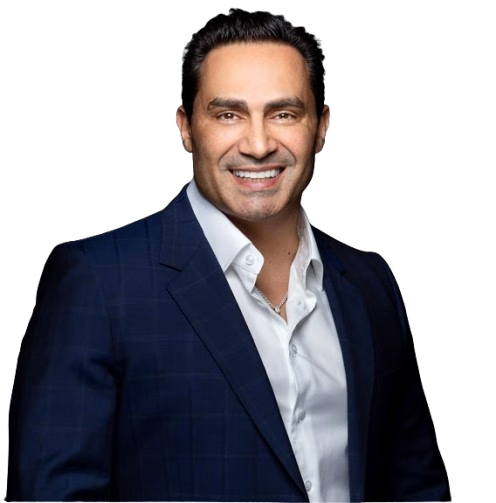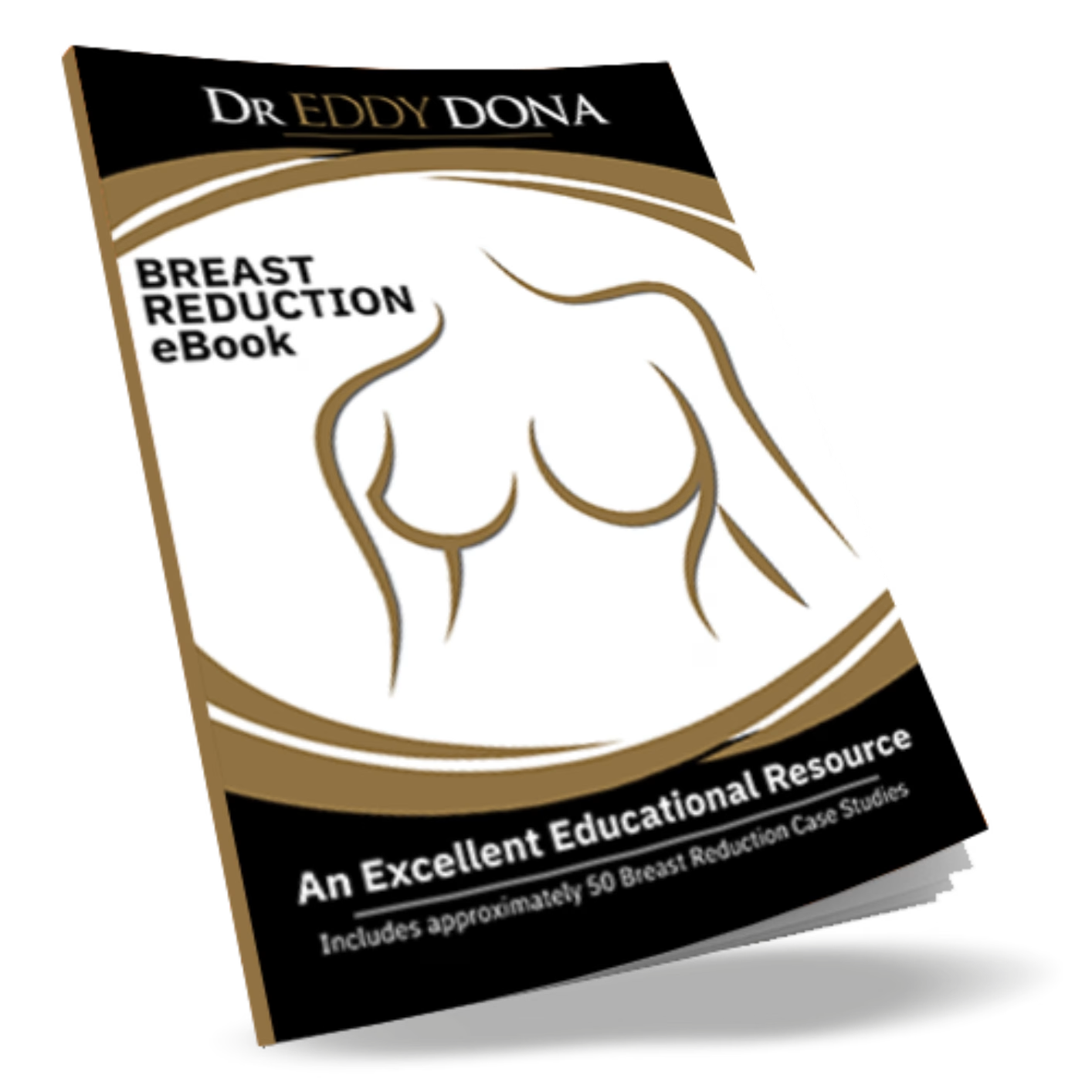Breast Reduction Sydney



As a meticulous practitioner, Dr Dona consistently refines his surgical skills, maintaining a steadfast commitment to delivering excellence in Plastic Surgery.
Request a callback and one of our friendly staff will give you a call and discuss the procedure with you

The displayed before and after pictures are provided as an educational tool to demonstrate some of the results achievable from plastic surgery. All surgeries on this page are performed by Dr Eddy Dona and are published with the written consent by the patients
VIEW BEFORE & AFTER GALLERY
During your initial consultation at our clinic in Sydney, you’ll be able to inform Dr Eddy Dona why you want a Breast Reduction and express any concerns that you have. Your medical history will also be taken where you should disclose any health problems, symptoms and concerns as well as a list of all medications you are currently taking and have taken in the past. Dr Dona will then perform a physical examination to assess and advise you on your options, taking into consideration your hopes and expectations. Dr Eddy Dona will go discuss the procedure including the usual post-operative course and potential issues. During this time, you will of course have the opportunity to discuss with Dr Dona any questions you have in relation to your Breast Reduction procedure.
During your consultation with Dr Eddy Dona, you will be asked about your medical history. You should disclose any health problems, symptoms and concerns as well as a list of all medications you are currently taking and have taken in the past.
If you plan to lose a large amount of weight, then we recommend that you stabilise your weight before Breast Reduction Surgery.
If you have a family history of breast cancer Dr Dona may recommend a mammogram before surgery.
Do not take any blood thinning medication such as aspirin, any medicine containing aspirin, large amounts of vitamins or anti-inflammatory drugs for two weeks prior to surgery.
Do not smoke for at least 2 weeks before surgery, as smoking increases surgical and anaesthetic risks and can lead to serious complications.
Prior to any planned surgery you will be provided with both verbal and written pre- and post-operative instructions regarding what you need to do and know.
The day before surgery, the hospital will call and advise you when you need to arrive at the hospital and the pre-surgical requirements, such as when to begin fasting prior to your surgery. Upon arrival at the allocated hospital, you will be required to check in with the reception staff. You will then be seen by a hospital staff member who will direct you to the pre-surgical waiting area, where you are officially “checked in” for your surgery. At this point you will be made comfortable while you wait to be taken into the operating room. We do our best to ensure that you are advised to come to the hospital as close to the scheduled surgery time; however, sometimes you may have to wait a little longer than planned before we can start your surgery.
Prior to your surgery, you will be taken into the theatre anaesthetic bay. This is where Dr Dona will see you, have a final chat about the surgery, and remind you about what to expect when you wake up. Dr Dona will also make his tentative surgical markings on you and remind you of what to expect after the procedure.
The Anaesthetist will also talk to you about the anaesthetic and the medications they’ll be giving you after surgery to keep you as comfortable as possible.
Depending on the size and shape of your breasts, the amount of skin and tissue to be removed, quality of skin and positioning of the nipples, Dr Eddy Dona will recommend one of these methods.
– Anchor shaped scar technique is the most common and involves an incision with the resultant scars extending around the areola, vertically down from the lower edge of the areola to the fold/crease of the breast and horizontally along the natural curve of the breast. After the excess skin, fat and breast tissue are removed the nipple and areola are moved to a higher position and stitched to reshape the breast. This is ideal for most moderate to large reductions.
– This technique does not include the scar running horizontally along the curve of the breast, but results in a vertical scar or “lollipop” type scar. This is ideal for most mild to moderate reductions.
– Sometimes referred to as a Benelli or doughnut technique. This method results in one scar around the areola but can leave the breast looking flat. It also doesn’t allow for a significant “lift” of the breast tissue. This is most suitable for very minimal reductions. However, it is mostly for small breast lifts without any real reduction in breast volume/weight.
In almost all breast reduction procedures the nipples and areolas remain attached to their blood and nerve supply while they are repositioned. However, if the breasts are extremely large and the nipples and areolas are near waist level then they may have to be completely removed and grafted into the new position. This will cause a change in appearance, permanent loss of nipple sensation, and a definite inability to breastfeed.
Having large breasts can have serious physical impacts on women. Breast Reduction Surgery can:
Age – healthy women of any age can have a Breast Reduction. Whilst it is sometimes considered and performed in teenagers with extremely large breasts, we recommend you wait until your breasts have fully developed.
Permanency – the reduction in breast volume is permanent but will increase and decrease with lifestyle factors, such as weight gain or pregnancy, and genetics.
Breastfeeding – prior to any surgery women with large breasts often have troubles breastfeeding as they tend to have a low milk output anyway.
It may still be possible to breastfeed after a Breast Reduction, however the surgery does reduce your chances of being able to successfully breast feed.
Whilst in some cases you may be able to go home from the hospital a few hours after surgery, it is likely we will recommend an overnight stay. Some discomfort and pain is normal and pain relief medication will be prescribed. Do not drive while you are taking prescription pain relief or sedatives.
Do not consider driving for the first week.
Do not take aspirin or other blood thinning drugs for at least two weeks after surgery as they increase the risk of bleeding.
During recovery, make sure you get lots of rest, drink plenty of fluids and eat small and healthy meals regularly.
All surgery results in some swelling and bruising but should start to settle after a couple of weeks.
For the first two weeks it is recommended that you sleep on your back. Do not smoke for at least two weeks after surgery as it impairs wound healing.
Dr Dona will advise you when you can return to normal activities and work, however, avoid heavy upper body activities and sports for at least four weeks after surgery.
We will give you a post-operative surgical bra for support which you will need to wear for six weeks. Following this, you can go out and be fitted for your new bras!
Like any wounds, the surgical scar from the incisions will be slightly red for a few months before it fades. However, it takes at least 12 months before it is fully mature.
We will take photographs of you after your operation as part of your ongoing evaluation. You will need to come in for periodic check-ups so that we can observe the long term results of your surgery.
Learn More About The Breast Reduction Recovery Process
After Breast Reduction Surgery, allowing your body enough time to heal and recover is essential for achieving optimal results. It is important to follow your surgeon’s post-operative instructions and guidelines to ensure a smooth and successful recovery. Below are some general guidelines to ensure a smooth recovery.
More information on general potential complications can be found on our site. LEARN MORE
Whenever someone is having an anaesthetic, no matter what it’s for, then things can potentially go wrong. That is why no surgery should be considered “minor”. Of course, whilst the chances of the following potential problems occurring are extremely small, you still need to know about then:
All these potential problems are standard for any operation, although some operations and some patients have an increased risk of developing them.
Some of the specific complications include:
Scarring – It is impossible to avoid scarring with any surgery, and the scar itself can have an unpredictable healing response. Our aim is to provide the best possible scar that your genetics allow.
Asymmetry of Breast Shape and Size – Prior to any surgery, all breasts have some slight asymmetry. Significant asymmetry issues will be addressed with your surgery, however slight ‘normal’ asymmetry will exist post-operatively.
Loss of Sensation in Nipple and Areola – If this does occur, it is usually temporary and feeling usually returns over a period of several months. In some cases (up to 10%) the loss of sensation may become permanent. Sometimes the nipple sensation can become too sensitive and uncomfortable, and this too can be permanent.
Loss of Nipple and Areola Tissue – Is fortunately rare. It happens when the nipple and areola lose its blood supply. Reconstruction can be performed at a later stage. Smoking (or any nicotine) significantly increases the risk of this happening.
Inability to Breastfeed – There is a reduction in the potential to breastfeed after surgery.
Breast Lumps – Uncommon and likely due to a small collection of blood or dead fat cells that are still healing. If it does occur it generally resolves on its own over time.
Excess Skin – In extremely large breasts sometimes an excess of breast tissue and skin remains under the armpits. These are referred to as “dog ears” and may warrant further surgery to improve.
Bottoming out – Due to the nature of the breast tissue and inherent heaviness, the natural breast tissue can continue to drop after surgery resulting in very “bottom heavy” breasts with nipples sometimes pointing upwards. Dr Dona uses a number of techniques to minimise this problem, however this can still occur.
Breast Tissue Softness and “Sagginess” – Whilst Breast Reduction Surgery can reduce the volume and change the position of you breast tissue, it can never make “soft” breast tissue firm. Also, soft breast tissue does not maintain its shape as well as firm breast tissue. Therefore, maintaining a fuller upper half of the breasts in these situations is generally not possible.
Breast Reduction is an elective surgery but is often carried out for health reasons, to ease the physical symptoms caused by excessively large breasts. Some of the fees may be covered by Medicare and your health fund; Dr Dona will advise whether this applies to you.
Whether your private health insurance covers Breast Reduction surgery largely depends on your policy and provider. If you have private health insurance with hospital cover, you may be eligible to have the hospital component subsidised. You should always confirm with your health fund what your level of coverage will pay for your surgery.